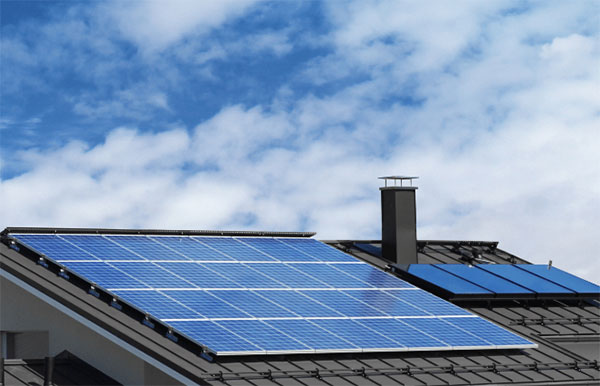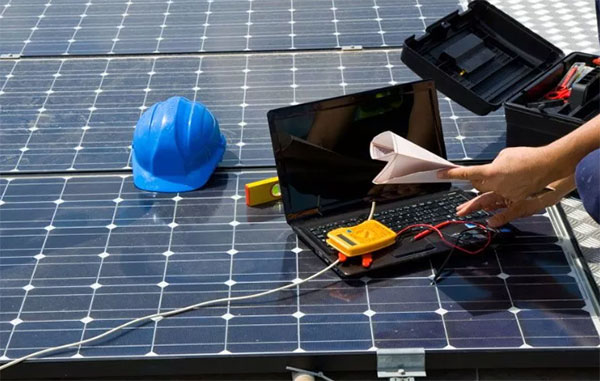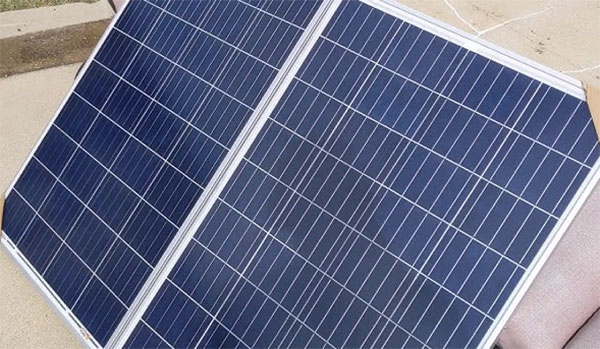Description
Yes, solar panels can work with artificial light but are less efficient than with natural sunlight due to lower light intensity and spectrum differences.
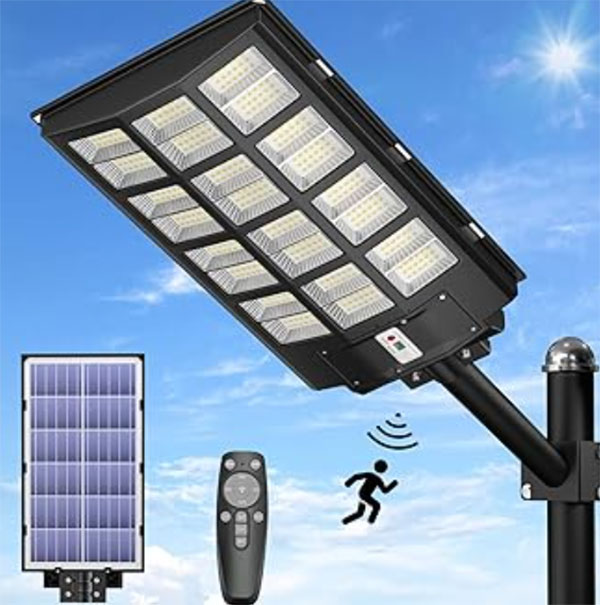
Fundamentals of Solar Panel Operation
Solar panels operate by converting sunlight into electricity. They consist of photovoltaic cells made from semiconductor materials, typically silicon. When sunlight hits these cells, it excites electrons, creating an electrical current.
How Solar Panels Harness Energy
Solar panels harness energy through the photovoltaic effect. Sunlight's photons collide with electrons in the solar cell, transferring energy and setting the electrons in motion. This motion generates an electrical current, harnessed as electricity for various uses. The efficiency of this process depends on the cell's material, design, and environmental factors like temperature and light intensity.
Typically, solar panels convert around 15% to 20% of the solar energy they receive into usable electricity. Higher efficiency panels can reach up to 22%, but these often come with increased costs. The power output of a standard panel is around 250 to 400 watts, although larger or more efficient panels can offer more.
Different Types of Solar Cells
There are several types of solar cells, each with unique characteristics, costs, and efficiencies.
- Monocrystalline Solar Cells
- Made from a single silicon crystal.
- Efficiency: Up to 20%.
- Lifespan: About 25-30 years.
- Cost: Higher compared to other types due to production complexity.
- Feature: Aesthetically pleasing black appearance.
- Polycrystalline Solar Cells
- Consist of multiple silicon crystals.
- Efficiency: Slightly lower, around 15-17%.
- Lifespan: Comparable to monocrystalline cells.
- Cost: More budget-friendly.
- Feature: Blue, speckled appearance.
- Thin-Film Solar Cells
- Made by depositing one or more thin layers of photovoltaic material onto a substrate.
- Types include amorphous silicon, cadmium telluride, and copper indium gallium selenide.
- Efficiency: Generally lower, around 10-13%.
- Lifespan: Shorter, about 20 years.
- Cost: Less expensive and flexible, suitable for various applications.
- Feature: Lightweight and potential for integration into building materials.
- Perovskite Solar Cells
- Use perovskite-structured materials.
- Efficiency: Rapidly improving, currently up to 25% in lab settings.
- Lifespan: Still under research and development.
- Feature: Potential for lower production costs and higher efficiencies.

Artificial Light Sources and Solar Panels
Solar panels can generate electricity from artificial light sources, though not as efficiently as from natural sunlight. Common artificial light sources include LED, fluorescent, and incandescent lights. These light sources differ in spectral output and intensity compared to the sun.
How Solar Panels Respond to Artificial Light
Solar panels can convert light from artificial sources into electricity, but the efficiency greatly depends on the light source's characteristics. LED and fluorescent lights are closer to the sun's spectrum and more effective for solar energy conversion than incandescent bulbs.
Efficiency Challenges with Artificial Light
The efficiency of solar panels under artificial light is typically much lower than under direct sunlight. This is due to the lower intensity and different spectral characteristics of artificial lighting. The power output from solar panels under indoor lighting conditions is significantly reduced, often producing only a small fraction of their rated capacity.
Potential Applications
Despite lower efficiency, using solar panels with artificial light can be practical in certain scenarios, such as powering small sensors or devices in indoor environments.
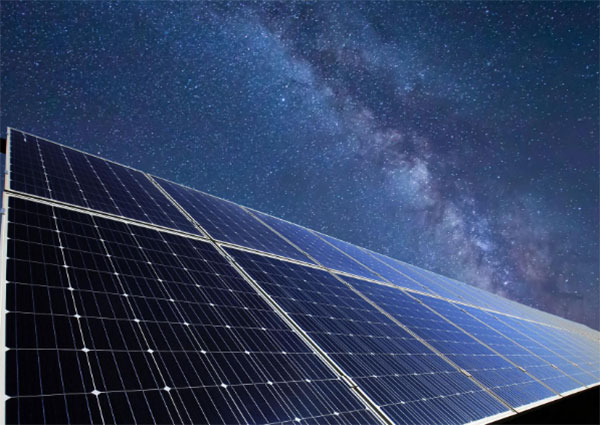
Comparison of Artificial and Natural Light
| Feature |
Artificial Light |
Natural Sunlight |
| Spectral Range |
Narrower, specific to the type of bulb (e.g., LED, fluorescent) |
Broad, covering a wide range from ultraviolet to infrared |
| Intensity |
Lower compared to sunlight, varies with distance and type |
Much higher, providing greater energy potential for solar panels |
| Consistency |
Consistent output, can be controlled and maintained at constant levels |
Varies with time of day, weather conditions, and geographical location |
| Energy Efficiency |
Less efficient for solar panels, with reduced electricity generation |
Highly efficient, solar panels are optimized for sunlight conversion |
| Cost Implications |
Additional energy cost for powering the lights |
Free source, but efficiency affected by environmental factors |
| Application |
Suitable for indoor, low-power applications |
Ideal for outdoor, high-power applications like grid-connected solar systems |
Efficiency of Solar Panels under Artificial Light
When exposed to artificial light, solar panels exhibit reduced efficiency. For instance, under typical indoor lighting, a solar panel's efficiency might drop to just a few percent of its rated capacity under sunlight. This reduction is due to both the lower intensity and the different spectral quality of artificial light compared to the sun.
Technical Aspects of Solar Panels with Artificial Light
Understanding the interaction between solar panels and artificial light involves exploring the technical aspects of light intensity, wavelength, and advances in solar cell technology.
Impact of Light Intensity and Wavelength
- Light Intensity
- Direct Effect on Power Output: The power output of solar panels under artificial light is directly proportional to the intensity of the light source. For example, a standard solar panel might produce around 15-20 watts per square meter under office lighting, compared to 100-200 watts in direct sunlight.
- Optimization for Specific Intensities: Some solar cells are optimized for lower light intensities, making them more suitable for indoor applications.
- Wavelength
- Spectral Sensitivity: Solar cells have varying sensitivities to different wavelengths. Artificial light, with its different spectral characteristics, may not align well with the peak sensitivity of standard solar cells designed for sunlight.
- Blue and Red Light Efficiency: Solar cells tend to be more efficient under blue and red wavelengths, which are prominent in LED lighting.
Advances in Solar Cell Technology for Artificial Light
- Development of Specialized Photovoltaic Cells:
- Amorphous Silicon Cells: Known for better performance under low light conditions. They can absorb a broader spectrum of light, including that emitted from artificial sources.
- Dye-Sensitized Solar Cells (DSSCs): These cells excel in diffuse light conditions and can be more effective under artificial lighting.
- Improving Efficiency and Cost-Effectiveness:
- Enhanced Materials: Research focuses on developing materials that are more responsive to the light spectrum of common artificial sources.
- Cost vs. Efficiency: The challenge lies in balancing the cost of production with the efficiency gains. For instance, while DSSCs offer advantages in artificial light, their overall efficiency and durability still lag behind traditional silicon cells.
- Integration into Indoor Devices:
- Emerging Applications: There is growing interest in integrating these specialized cells into indoor devices, such as smart home sensors and Internet of Things (IoT) devices.
- Power Output Considerations: These applications typically require lower power, aligning well with the output capabilities of solar cells under artificial light.

Environmental and Economic Implications
Exploring the environmental and economic implications of using solar panels with artificial light involves assessing the carbon footprint of artificial light sources and conducting a cost-benefit analysis of solar panels in such settings.
Carbon Footprint of Artificial Light Sources
- Energy Consumption and Emissions:
- Different Light Sources, Different Footprints: Incandescent bulbs consume more energy and therefore have a higher carbon footprint compared to more efficient sources like LEDs and fluorescents.
- Reduction with LEDs: Switching to LED lighting can significantly reduce the carbon footprint associated with artificial lighting.
- Impact on Solar Panel Use:
- Offsetting Carbon Emissions: Using solar panels to power devices under artificial light can help offset some of the carbon emissions associated with the electricity used to power those lights.
- Net Environmental Benefit: The benefit depends on the efficiency of the solar cells and the type of artificial light used.
Cost-Benefit Analysis of Solar Panels with Artificial Light
- Initial Costs and Long-Term Savings:
- Higher Initial Investment: The cost of setting up solar panels, even for use with artificial light, can be substantial.
- Potential Energy Savings: Over time, these panels can contribute to energy savings, especially in scenarios where they power low-energy devices.
- Efficiency Considerations:
- Reduced Efficiency Under Artificial Light: The lower efficiency of solar panels under artificial light impacts their cost-effectiveness.
- Balancing Costs with Application: The economic feasibility depends on the specific application, such as small-scale indoor use, where energy requirements are minimal.
- Indirect Economic Benefits:
- Reducing Energy Dependence: In scenarios where solar panels can effectively harness artificial light, there's a reduction in dependence on the grid, leading to potential cost savings.
- Longevity and Maintenance: Solar panels generally have long lifespans and low maintenance costs, contributing to their overall economic viability.
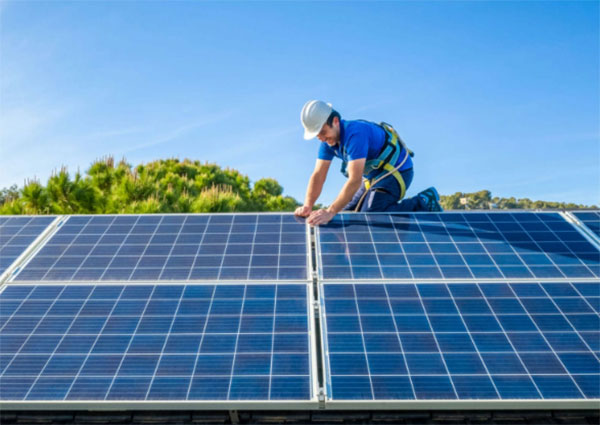
Applications of Solar Panels in Artificial Lighting Environments
The use of solar panels is not limited to outdoor, sunlit environments. Their application extends into areas illuminated by artificial light, offering innovative ways to harness energy.
Indoor Solar Energy Harvesting
Solar panels are making their way into indoor environments, where they can harness energy from artificial light sources. This application is particularly relevant for low-power devices such as sensors, calculators, and some IoT devices.
- Maximizing Efficiency in Indoor Settings: The key is to use solar cells optimized for lower light levels commonly found indoors. Amorphous silicon cells, known for their higher sensitivity to diffused light, are a popular choice in these scenarios.
- Economic Viability: While the power output is significantly lower than in direct sunlight — often just a few watts per square meter — the energy harvested can be sufficient for small devices, reducing reliance on batteries or grid power.
- Material Advancements: Research is ongoing to develop materials that can more effectively convert indoor light into electricity, potentially enhancing the viability of indoor solar energy harvesting.
Solar Panels in Space: Use of Artificial Light
Solar panels in space stations and satellites often rely on artificial light sources, particularly when direct sunlight is not available.
- High-Efficiency Cells for Space: These applications use highly efficient, multi-junction solar cells capable of converting a broader spectrum of light into electricity.
- Challenges and Innovations: The main challenge in space is the extreme environmental conditions. Solar panels designed for space applications are built to withstand these conditions, ensuring long-term operation.
- Economic and Technical Factors: The cost of deploying solar panels in space is high, considering the expenses of space missions. However, the long-term benefits of having a reliable power source in space justify the investment.






